As I said in a previous post, we work in the cloud. Our data and the software required to analyze them are stored in our Meerkat System76 server. We do not need powerful desktop computers, just single connection points in the cloud. Our server will do the hard work.
You might heard of the Raspberry Pi, a credit card sized single board computer. The latest Raspberry Pi 4 is based on a new processor called the BCM2711, a system-on-a-chip that integrates a 64-bit 1.5 GHz Quad-Core (ARM v8) CPU and up to 8 GB of SDRAM. Local storage is provided via a ScanDisk memory card slot on board.
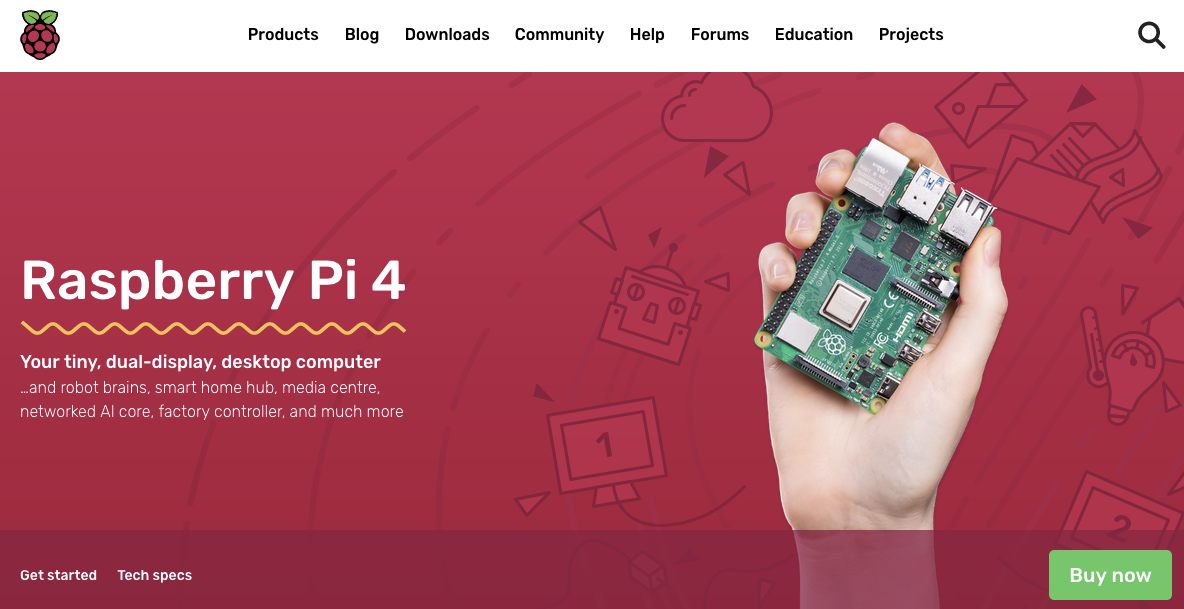
The power consumption of a single Raspberry Pi 4 is slightly less than 5W at full speed: all cores at 100%. It runs the Raspbian operating system, an optimized version of the Debian GNU/Linux distribution (you can download a pre-loaded image from the Raspberry Pi Foundation).
This is the list of what you need to build a connection point to your server:
- Raspberry Pi 4 Model B
- Raspberry Pi Keyboard & Hub
- Raspberry Pi Mouse
- Raspberry Pi 15.3W USB-C Power Supply
- Raspberry Pi 4 Case
- Raspberry Pi NOOBS - Preinstalled Micro SD Card (64 GB)
- Heat Sink Raspberry Pi 4
- Micro HDMI to Standard HDMI (A/M) Cable (2 units)
- Dell Ultrasharp U2719DX 27-Inch WQHD 2560x1440 (2 units)
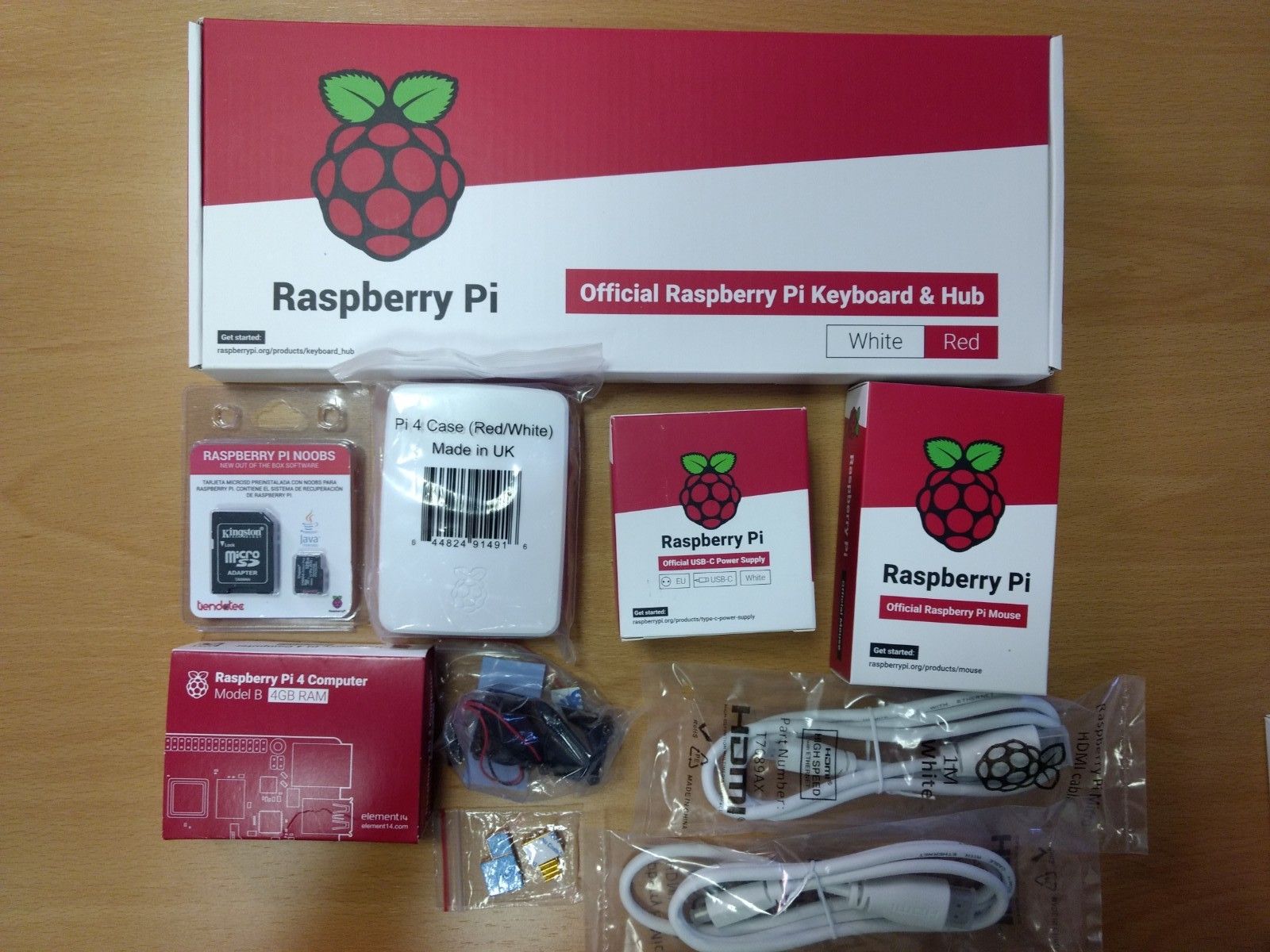
We'll start by placing the four pieces of aluminium heatsinks (CPU, memory, chipset USB, and chipset Ethernet).

It will look like this:
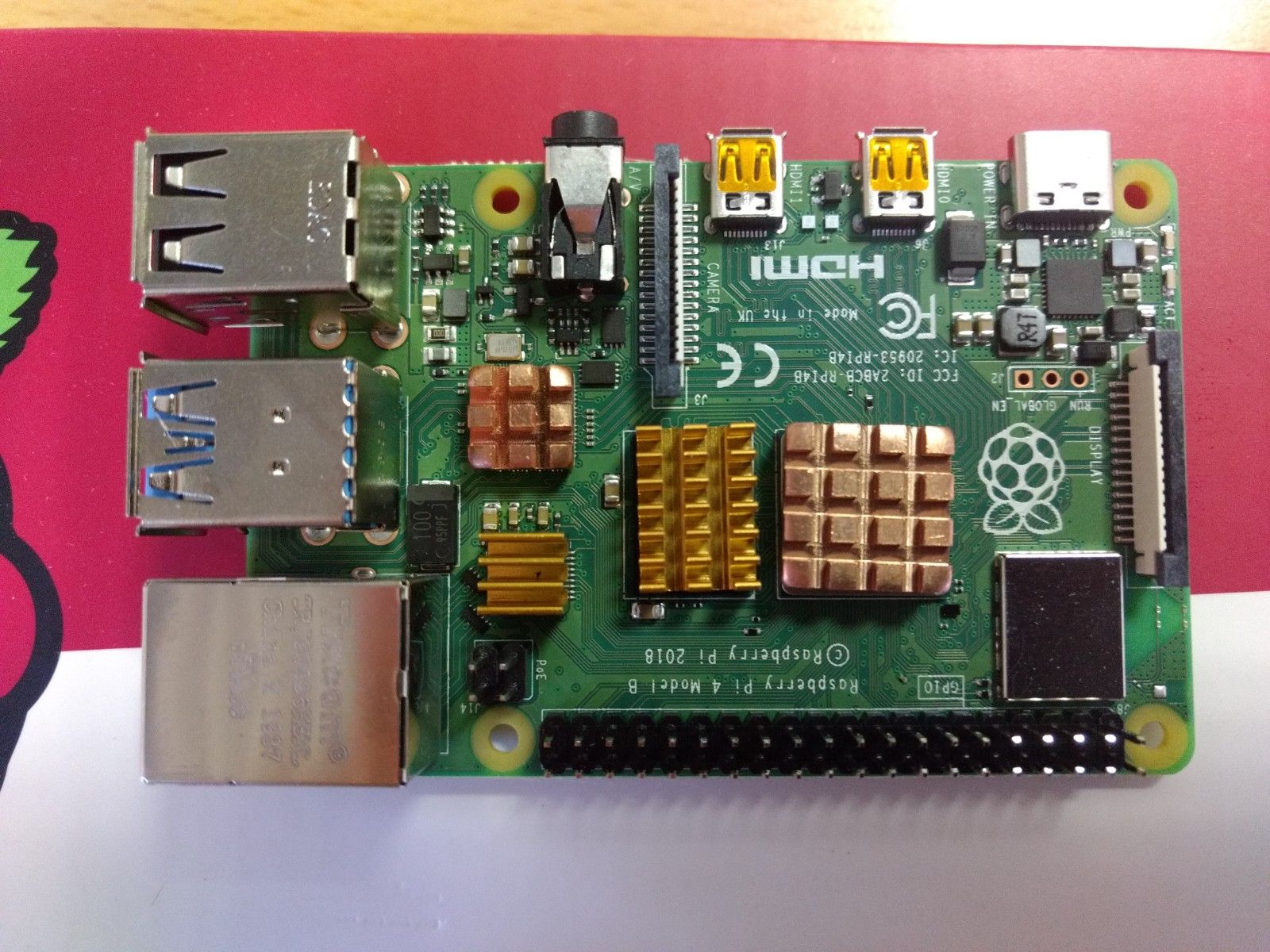
Next, we will insert the Raspberry Pi 4 into the case:
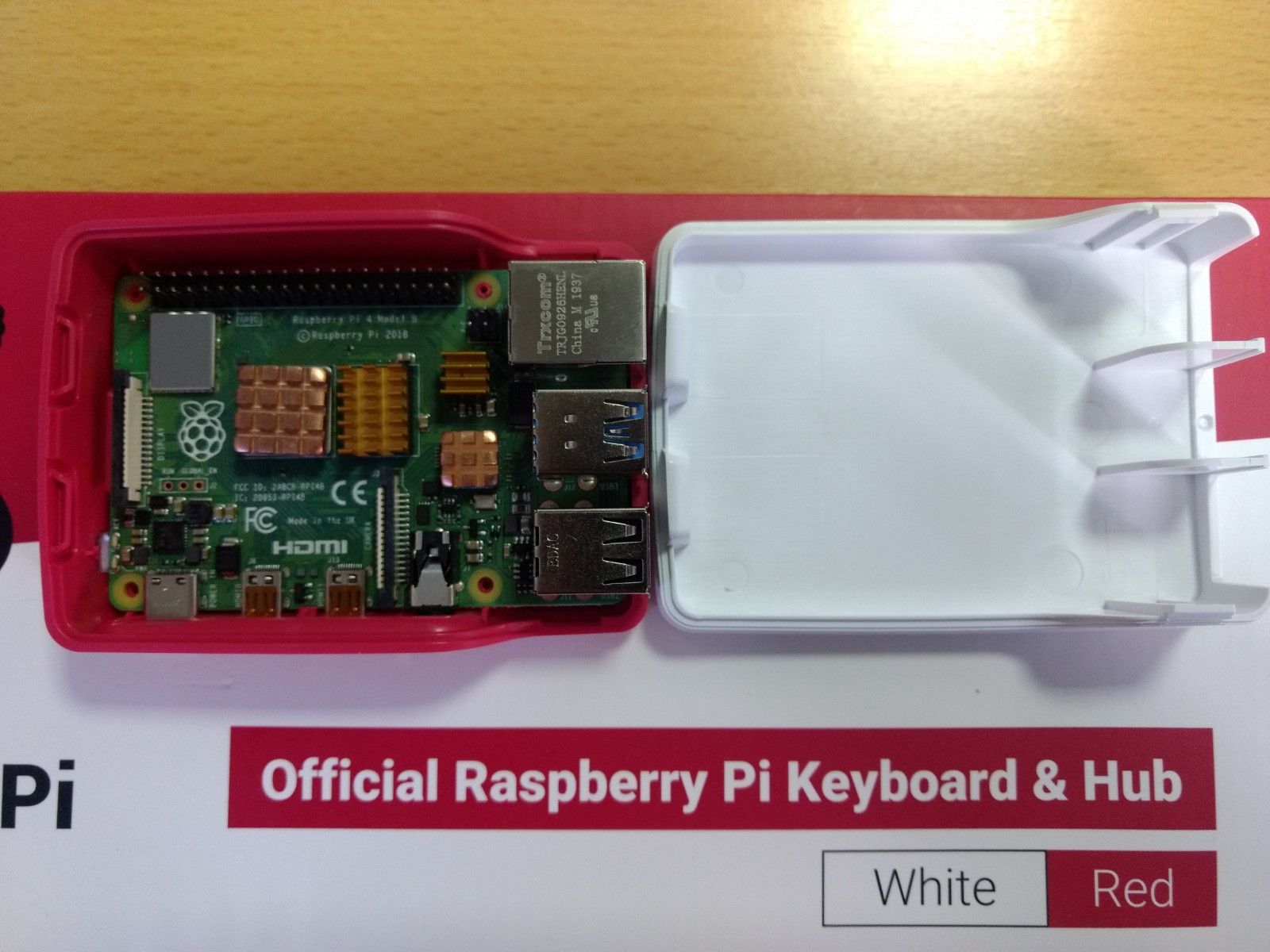
After connecting the keyboard, mouse, Ethernet, and the power supply, we will connect the Raspberry Pi 4 to the two Dell monitors:

We will rotate the monitors and install Raspbian from the NOOBS micro SD card.
And this is how our desktop computer looks like:
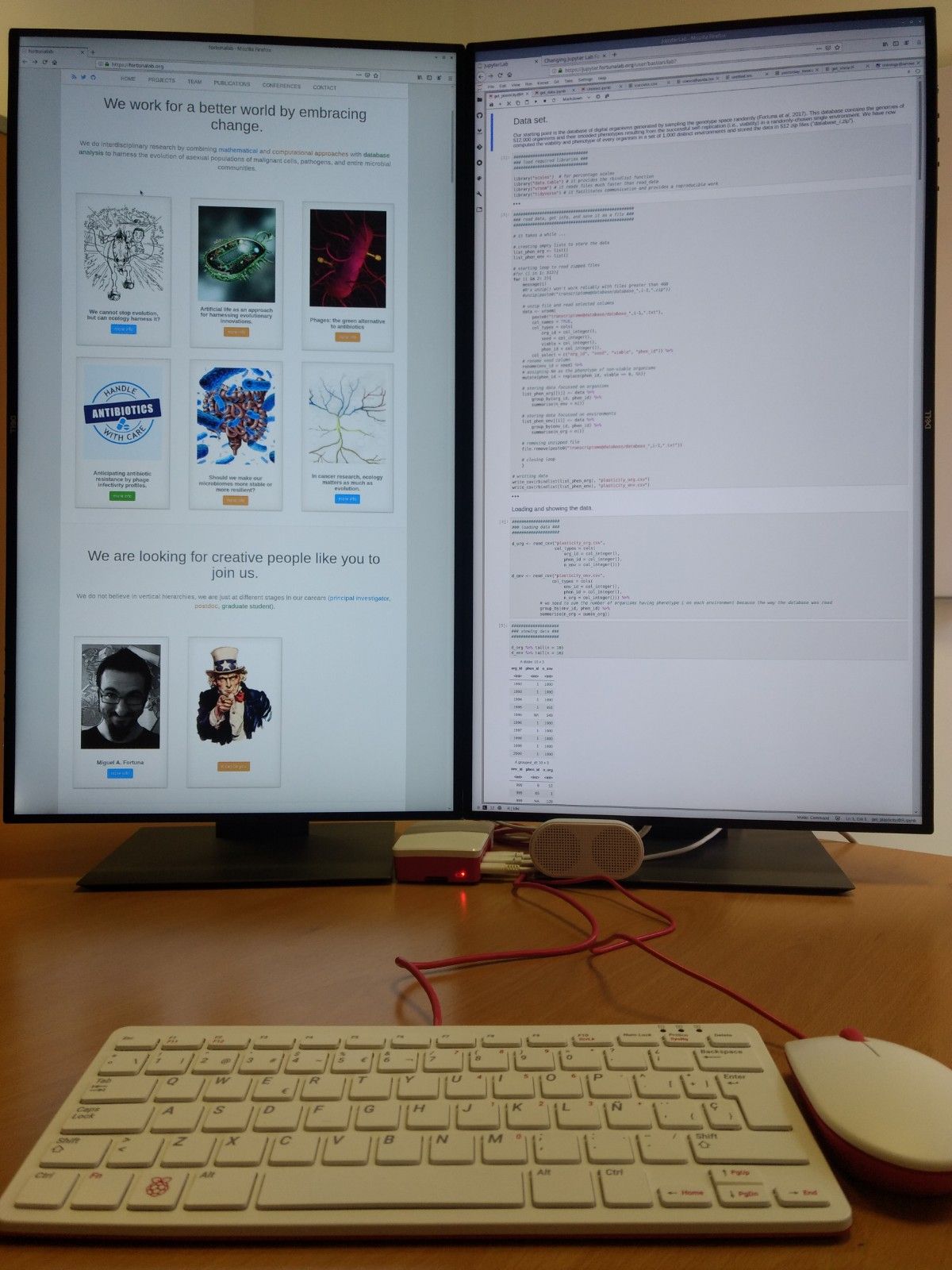
In our lab we do not need powerful computers for our team, just what you see here: a silent, energy-efficient, and dual display workspace.

